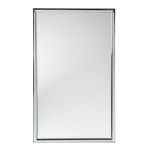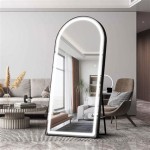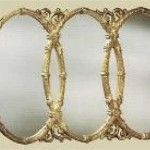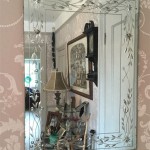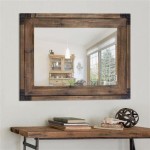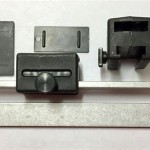Wrought Iron Mirror Frames
Wrought iron mirror frames offer a timeless elegance and durability that few other framing materials can match. Their versatility allows them to complement a variety of interior design styles, from rustic farmhouse to modern industrial. Understanding the characteristics, manufacturing process, and design considerations of wrought iron mirror frames can help homeowners make informed decisions when selecting the perfect frame for their space.
The Characteristics of Wrought Iron
Wrought iron is a ferrous metal alloy with a very low carbon content. This composition distinguishes it from cast iron, which possesses a higher carbon content. The lower carbon content gives wrought iron enhanced malleability and ductility, making it easier to work and shape. It also contributes to the material's notable tensile strength, meaning it can withstand significant pulling forces without breaking. This durability makes wrought iron a suitable material for items that require both strength and intricate design, such as mirror frames.
Wrought iron's inherent susceptibility to rust is a key consideration. While this characteristic can contribute to a desirable aged patina in some design contexts, it also necessitates protective measures. Typically, wrought iron frames are treated with protective coatings, such as paint, powder coating, or a clear sealant, to prevent oxidation and maintain the frame's appearance. Regular maintenance, including cleaning and occasional reapplication of protective coatings, can further extend the lifespan of wrought iron mirror frames.
Manufacturing Processes for Wrought Iron Frames
Traditionally, wrought iron frames were created through a laborious process involving heating and hammering the metal. Blacksmiths would heat the iron in a forge until it became malleable, then shape it using tools like hammers and anvils. This traditional method, while still practiced by some artisans, is now less common due to its time-consuming nature. Many modern wrought iron frames are produced using more contemporary techniques.
One common modern manufacturing process involves forging the iron using machines. These machines can exert greater force and precision than manual hammering, allowing for more complex designs and faster production. Another method utilizes pre-fabricated wrought iron components that are assembled and welded together to create the frame. This method is often more cost-effective for mass production.
Regardless of the manufacturing process, finishing the frame is a crucial step. This typically involves cleaning the metal to remove any impurities or scale. The frame is then treated with a protective coating, which can be applied through various methods like painting, powder coating, or electroplating. The chosen finish not only protects the iron from rust but also contributes to the frame’s aesthetic appeal, offering various color and texture options.
Design Considerations for Wrought Iron Mirror Frames
The versatility of wrought iron allows for a wide range of design options. Frames can be simple and understated, or highly ornate with intricate scrollwork and decorative elements. The thickness of the wrought iron used also influences the frame’s overall appearance, with thicker frames creating a bolder, more substantial look, while thinner frames offer a more delicate aesthetic.
The finish of the frame plays a significant role in its overall style. A classic black finish lends a timeless elegance, while finishes like brushed silver or antique gold can add a touch of glamour. Distressed finishes, which mimic the look of aged iron, are popular choices for rustic or vintage-inspired interiors. The finish should be chosen to complement both the mirror and the surrounding décor.
When selecting a wrought iron mirror frame, consider the size and shape of the mirror itself. A large, ornate mirror might be best suited to a simpler frame that doesn’t compete with the mirror’s grandeur. Conversely, a smaller, simpler mirror could benefit from a more elaborate frame to add visual interest. The frame’s size should be proportional to the mirror, creating a balanced and harmonious composition.
The style of the surrounding décor should also be considered. A wrought iron frame with intricate scrollwork and detailing might complement a traditional or Victorian-style interior, while a simpler, more geometric frame might be better suited to a modern or minimalist space. Choosing a frame that complements the existing décor ensures a cohesive and well-designed interior.

Wrought Iron Mirror Frame Artisan Crafted

Rectangular Mirror With Frame In Wrought Iron Idfdesign

Decorative Wrought Iron Mirror Frame Artisan Crafted

Hand Crafted Iron Mirror Custom Made S

Deco Wall Mirror In Wrought Iron Frame Jefferson West Inc

Wrought Iron Mirror Frame At Best In Delhi Metal Creation

Mirror In Wrought Iron Frame Uniquely Yours Transform Your Space Into A Magical Place

Mirror Frame With Decoration Of Roses Wrought Iron

44 Wrought Iron Mirrors Ideas Mirror Furniture

Small Wrought Iron Accent Mirror Vanity Or Hallway Metal Wall Rustic Home Decor

